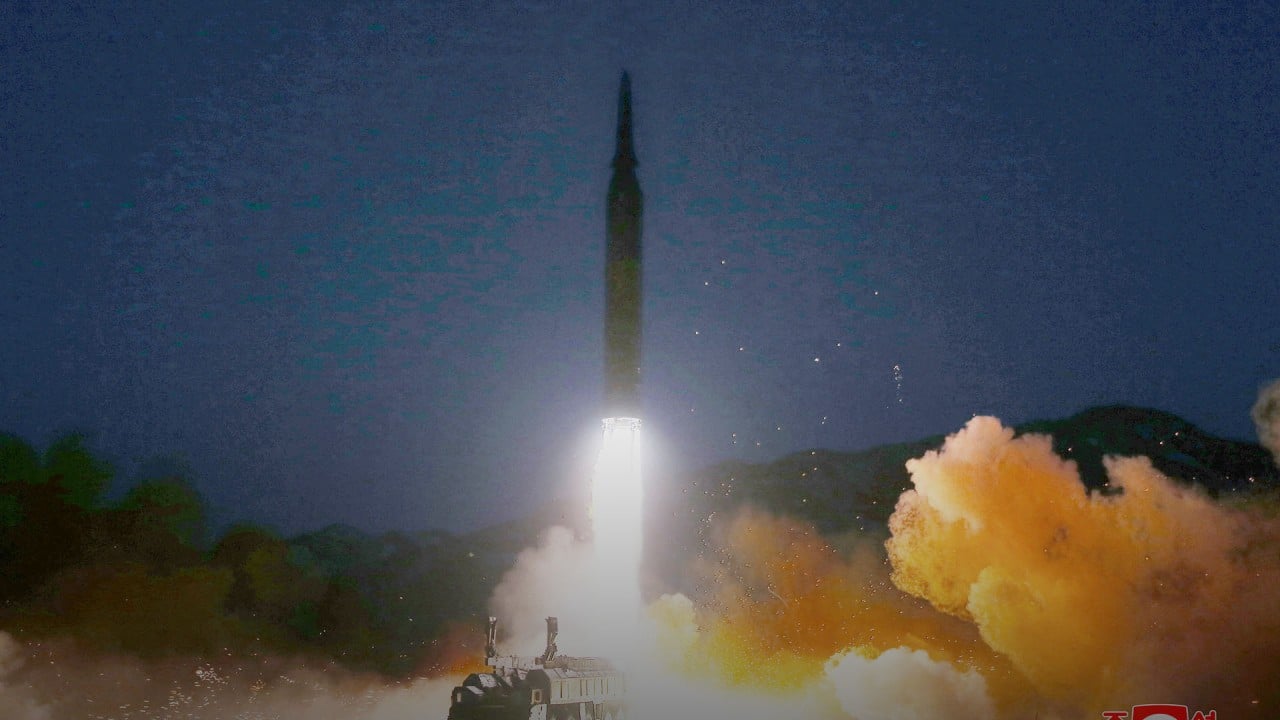
Hypersonic arms race set to change power dynamics between countries and the tempo of modern combat
- Western democracies are developing weapons that travel at least five times the speed of sound in response to rapid development by China and Russia
- Difficulty in intercepting and defending against them mean warfare could become a ‘battle of the first salvo’, or he who shoots first, wins, says analyst
The assessment comes as several countries, including the United States, China and Russia, are developing the highly destructive weapon whose high speed and greater range make them difficult to intercept.
Western democracies are developing hypersonic weapons in response to the rapid development of such weapons by China and Russia, who appear to have a lead in this area.
And the Japanese military is considering developing a hypersonic anti-ship missile with a warhead specifically designed to penetrate the decks of Chinese aircraft carriers.
What are hypersonic weapons, and why is there a race to develop them?
Timothy Heath, a senior security analyst from US think tank Rand, said “there definitely seems to be a hypersonic missile arms race under way … because the technology is new and there is no defence against it”.
“The main reason the countries are developing hypersonic weapons is for deterrent purposes. There is currently no defence against the weapons, so countries are building their own capabilities to deter a country like China or Russia. The reasoning is that a hypersonic missile strike by China or Russia could be met with a retaliatory strike by the defending the country,” Heath said.
Heath warned that the net result was likely to be heightened tension as countries build up inventories of hypersonic missiles.
“These missiles move extremely fast and cannot be defeated, so there is a danger that in a crisis a country could miscalculate and launch one of the missiles, spurring retaliatory strikes.
“As tensions between China and the US and its allies increase, it will become more imperative that all sides find ways to ease tensions and improve crisis management mechanisms in order to reduce the danger,” he said.
Malcolm Davis, a senior analyst from the Australian Strategic Policy Institute, echoed Heath’s forecast.
“I think we are potentially seeing the beginnings of a hypersonic race emerging, as both the Western democracies and their authoritarian adversaries sense the importance of this type of technology for long-range strike against land and maritime [targets],” Davis said.
“Obviously, there are ways to reduce the threat – to sever the kill chain between sensor and shooter, and to enhance missile defence technologies, but with hypersonics, it’s actually likely to become a ‘battle of the first salvo’ – he who shoots first, wins,” Davis said.
Could artificial intelligence help halt a hypersonic missile attack?
Ridzwan Rahmat, a security analyst from Janes, said the proliferation of hypersonic weapons accelerated the tempo of modern combat operations.
“Tactics and doctrines are now shifting in a way for units in the battlefield to react faster to the possibility of a hypersonic weapon deployment. Additionally, there are now efforts to develop higher-powered sensors and suitable satellite technology that can better detect these weapons,” Rahmat said.



